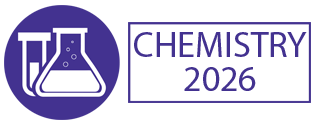Ion Exchange Chromatography
Ion exchange chromatography (IEC) is a powerful separation technique used to separate and purify charged molecules based on their interactions with ion exchange resins. In IEC, the stationary phase consists of charged functional groups immobilized on a solid support, while the mobile phase is a buffer solution. The sample is applied to the column, and molecules with charges opposite to that of the stationary phase are retained, while molecules with similar charges are eluted first. IEC is commonly used to separate proteins, peptides, nucleic acids, and charged small molecules. Different types of ion exchange resins, such as cation exchange resins and anion exchange resins, are utilized depending on the charge properties of the analytes. IEC offers high resolution and selectivity, making it suitable for complex mixtures and biomolecules. It is widely used in biochemistry, pharmaceuticals, biotechnology, and environmental analysis for purification and characterization purposes. Continuous advancements in column chemistry, instrumentation, and automation improve the efficiency and reproducibility of IEC. Collaboration between researchers and industry professionals drives innovation in IEC, expanding its applications and capabilities for various analytical needs.

Hossam A Gabbar
Ontario Tech University, Canada
Victor John Law
University College Dublin, Ireland
Alexander Bagaturyants
National Research Nuclear University MEPhI, Russian Federation
Sergey Suchkov
N.D. Zelinskii Institute for Organic Chemistry of the Russian Academy of Sciences, Russian Federation
Shree Niwas Chaturvedi
Centre for Aptitude Analysis and Talent Search, India
Pieter Samyn
SIRRIS, Belgium




Title : Advances in plasma-based radioactive waste treatment
Hossam A Gabbar, Ontario Tech University, Canada
Title : Unraveling the ultrastructure and functions of the neuronal membrane skeleton using super-resolution fluorescence microscopy
Zhou Ruobo, Djillali Liabes University of Sidi Bel Abbes, Algeria
Title : Solar box cooker dehydration, and relative humidity endpoint detection, of lamiaceae culinary leaves on the island of Crete
Victor John Law, University College Dublin, Ireland
Title : Nutrient and heavy metal loads from the Ribeiras to Coastal zones: A land-ocean continuum perspective in Madeira Island
Aracelis Del Carmen Narayan Rajnauth, University of Porto, Portugal
Title : Prospective polyoxometalate-based covalent organic framework heterogeneous catalysts
Arash Ebrahimi, Comenius University Bratislava, Slovenia
Title : Eliminating implant failure in humans with nano chemistry: 30,000 cases and counting
Thomas J Webster, Brown University, United States